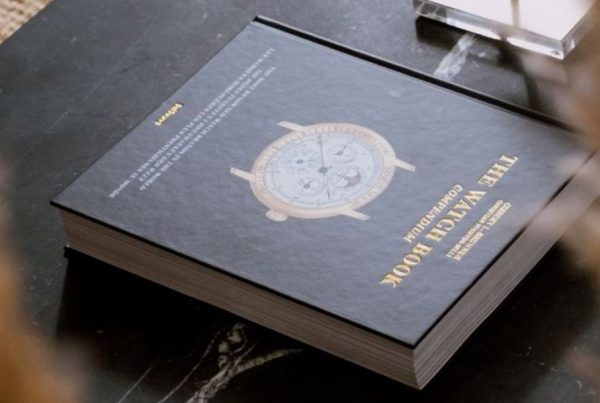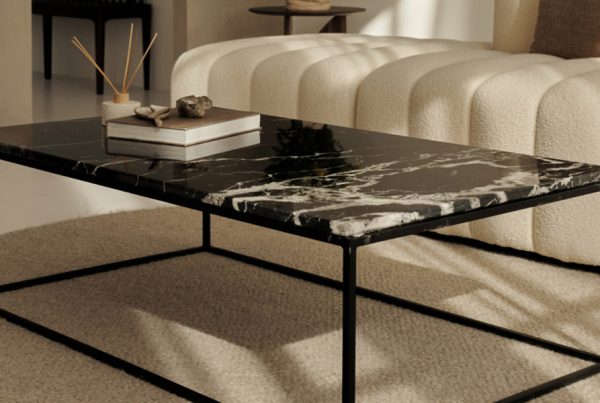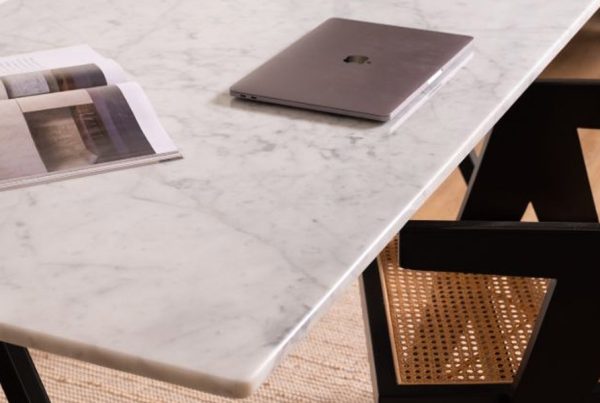Marble tables are refined pieces of furniture that add a touch of luxury and elegance to any interior. These timeless pieces are made from natural marble, a type of stone that has been prized for centuries for its beauty and durability. Nowadays you see them more and more in interiors and we think that is more than justified!

Marble tables are popular
Originated from a passion for marble
This website was created out of love and passion for marble. Years ago we came into contact with marble in Italy. In the Netherlands, few interiors were equipped with beautiful marble products. That is why we started looking for the best marble dining tables, marble coffee tables, marble side tables and other marble products.

Benefits of marble
Elegant appearance
Marble tables instantly add a touch of luxury and elegance to any interior.
Sustainability
Marble is a durable material that resists wear and tear and lasts a long time.
Heat resistance
Marble is naturally heat resistant, making it an excellent choice for dining tables and kitchen countertops.
Easy to maintain
Marble is relatively easy to clean with mild detergents and water.
What type of marble table are you looking for?
Frequently Asked Questions
What is a marble table?
A marble table is a table top made of marble, a natural stone extracted from quarries around the world. Marble is known for its distinctive vein patterns and unique colors, giving each piece an exclusive character. These tables are often used in dining rooms, living rooms and even as accent pieces in offices and commercial spaces.
What is the difference between a marble table and a wooden table?
Marble tables and wooden tables are both popular choices when it comes to decorating a space, but they each have their unique features and aesthetics. Let’s look at the difference between these two types of tables.
Material
Marble tables are made from natural marble, a rock characterized by its unique vein patterns and colors.
Wooden tables are made from different types of wood, such as oak, mahogany, or teak, each with their own natural color and grain patterns.
Appearance
Marble tables have a luxurious look and add a touch of elegance to any room. They radiate class and refinement.
Wooden tables have a warm and natural appearance. They bring a feeling of coziness and authenticity to an interior.
Sustainability
Marble tables are durable and resistant to heat and scratches, but do require regular maintenance to prevent stains and maintain their shine.
Wooden tables can also be durable, depending on the type of wood and finish. However, they can be more susceptible to scratches and dents.
Maintenance
Marble tables should be cleaned regularly with mild detergents and protected from acidic liquids that can cause stains.
Wooden tables also require regular maintenance, such as polishing and occasional re-oiling or varnishing, to maintain their shine and durability.
Price
Marble tables are generally more expensive than wooden tables due to the preciousness of the marble and the craftsmanship required to carve it.
Wooden tables are often more affordable and offer a wide range of price ranges depending on the type of wood and finish.
In short, the difference between a marble table and a wooden table comes down to personal preference, style and budget. Both types of tables have their own unique charm and can be a beautiful addition to any interior.
How do you choose a suitable marble table?
Marble tables are timeless pieces that are not only functional, but also make a statement in any interior. Their elegance and durability make them a worthwhile investment for lovers of refined furniture. Please note the following points:
- Style and design: Consider the style and design of the marble table that best suits your interior.
- Dimensions: Measure the available space and choose a marble table with suitable dimensions.
- Color and pattern: Select a marble table with a color and pattern that matches your personal preference and interior.
- Quality of the Marble: Check the quality of the marble and ensure that it is free from cracks, stains and imperfections.
How much does a marble table cost?
The average cost of a marble table can vary depending on several factors, such as size, type of marble, finish, and brand. In general, marble tables can be quite pricey due to the preciousness of the marble and the craftsmanship required to carve it.
Prices for marble tables can start at several hundred euros for smaller models and rise to thousands of euros for larger and more luxurious ones. It is not unusual to find marble tables in the higher price range, especially with exclusive designs or brands.
It is important to take into account the budget and the desired quality and style when purchasing a marble table. Comparing prices from different suppliers and considering options such as second-hand or outlet can help find a marble table that fits your budget and needs.
How do I best maintain a marble table?
The maintenance of a marble table is essential to maintain its beauty. Here are some tips to keep your marble table in optimal condition:
- Clean immediately: Wipe up spills immediately to prevent stains. Use a soft cloth or paper towel to absorb the moisture.
- Mild Cleaners: Use a mild cleanser, such as green soap and water, to clean your marble table. Avoid aggressive cleaning agents that can damage the marble.
- Regular maintenance: Clean your marble table regularly with a damp cloth to remove dust and dirt. This helps prevent dirt from building up and dulling the marble.
- Protection against scratches: Use coasters or placemats to prevent scratches from sharp objects. Marble is prone to scratches, so be careful when placing objects on the table.
- Sealing: Consider having your marble table sealed with a suitable marble sealer. This can help protect the marble from stains and wear.
- Periodic maintenance: Periodically perform deeper cleanings with a special marble cleaner to remove dirt and residue. Follow the instructions on the cleaner’s label for best results.
By following these simple maintenance tips, you can ensure that your marble table maintains its beautiful appearance and lasts for many years.





